Two identical plano-convex lenses L1(μ1−1.4) and L2(μ2−1.5)
of radii of curvature R=20cm are placed as shown in Figure.

Q. Find the position of the image of the parallel beam of light relative to the common principal axis.
100/7cm
200/9
31.2cm
21.8cm
The correct Answer is:b.
a. Focal lengths of lenses L1 and L2 are, respectively, given by
1f1=(μ−1)(1R−1∞)⇒f1=50cm
1f2=(μ−1)[1∞−(−1R)]⇒f2=40cm
The equivalent focal length f of the combination is given by
1f=1f1+1f2⇒f=2009cm
Hence, the image of the parallel beam is formed on the common principal axis at a distance of 22.22cm from the combination on the right side.
b. Image formed by L1 is at a distance of 50cm behind the lens. This image lies on the principal axis of L1 and will act as an object for L2
For L2, object distance, u=+50cm
f2=+40cm
1υ−1u=1f⇒μ=2009cm
Magnification caused by L2,m=υu=49
For L2 object I1 is at a distance of 4.5mm above its principal axis.
Hence, distance of image I2 of the object (virtual) I1 is at a distance (4/9)×4.5=2mm above the principal axis of L2
[∴height of image=mxxheight of object]
Hence, final image is at a distance of 22.22cm behind the combination at a distance of 2.5mm below the principal axis of L1.
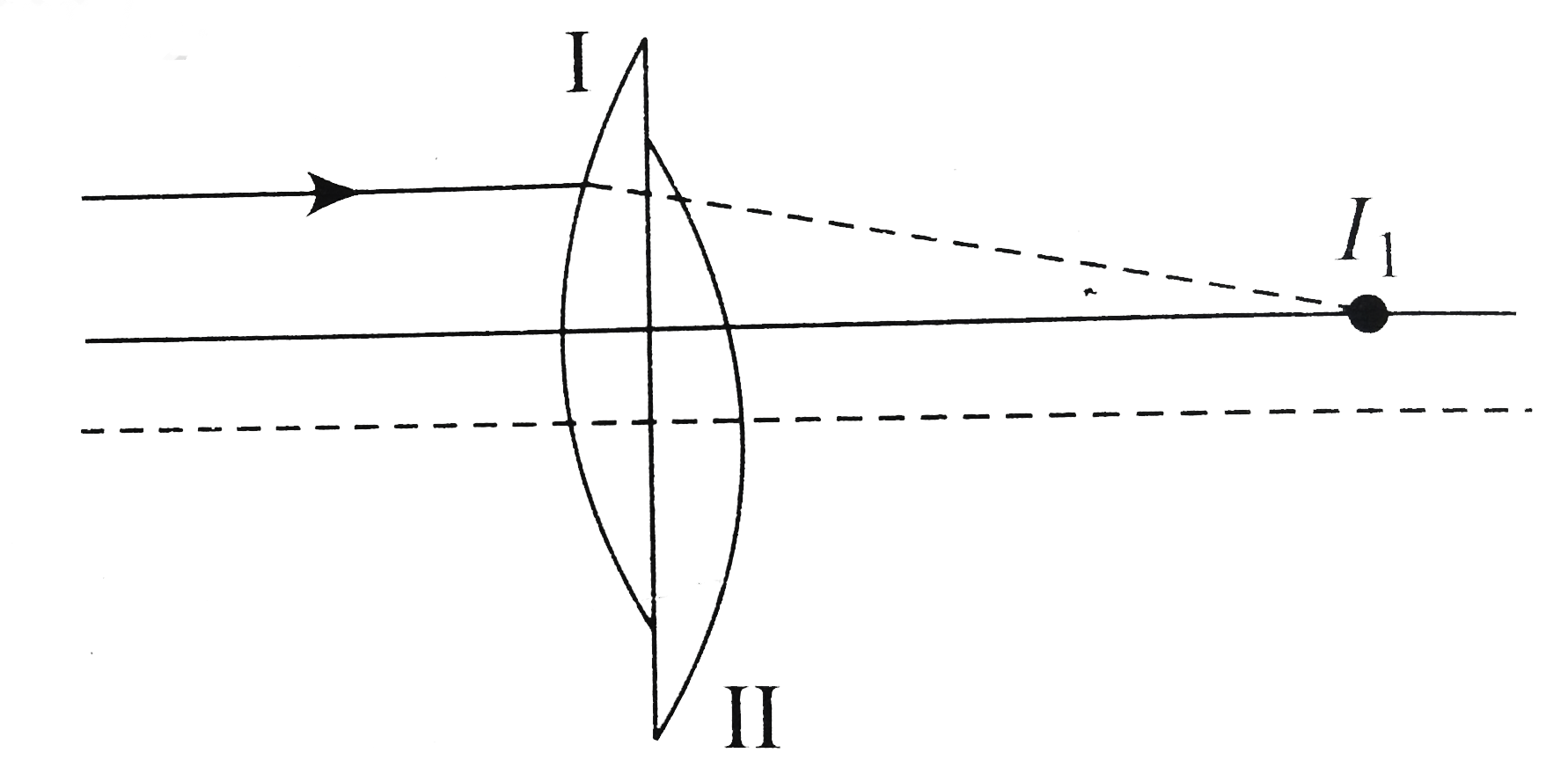
Topper's Solved these Questions
- GEOMETRICAL OPTICSBOOK - CENGAGE PHYSICS ENGLISHCHAPTER - GEOMETRICAL OPTICSEXERCISE - Integer
15 Videos
- GEOMETRICAL OPTICSBOOK - CENGAGE PHYSICS ENGLISHCHAPTER - GEOMETRICAL OPTICSEXERCISE - Archives
7 Videos
- GEOMETRICAL OPTICSBOOK - CENGAGE PHYSICS ENGLISHCHAPTER - GEOMETRICAL OPTICSEXERCISE - Assertion-Reasoninig
2 Videos
- ELECTRON,PHONTS,PHOTOELECTRIC EFFECT & X-RAYSBOOK - CENGAGE PHYSICS ENGLISHCHAPTER - ELECTRON,PHONTS,PHOTOELECTRIC EFFECT & X-RAYSEXERCISE - dpp 3.3
15 Videos
- HEATING EFFECT OF CURRENTBOOK - CENGAGE PHYSICS ENGLISHCHAPTER - HEATING EFFECT OF CURRENTEXERCISE - Thermal Power in Resistance Connected in Circuit
27 Videos
Similar Questions
Two identical plano-convex lenses L1(μ1−1.4) and L2(μ2−1.5) of radii of curvature R=20cm are placed as shown in Figure.

Q. Now, the secocnd lens is shifted vertically downward by a small distance 4.5mm and the extended parts of L1 and L2 are blackened as shown in figure. Find the new position of the image of the parallel beam.

View SolutionFigure below shows a parallel beam of monochromatic light incident on a convex spherical surface, radius of curvature R = 30 cm, which separates glass (refractive index - 1 6) from air. Find the position of the image formed due to refraction of light at this single spherical surface.

View Solution
Knowledge Check
The radius of curvature of the curved surface of a plano-convex lens is 20cm. If the refractive index of the material of the lens be 1.5, it will
Aact as a convex lens only for the objects that lie on its curved side.Bact as a concave lens for the objects that lie on its curved side.Cact as a convex lens irrespective of the side on which the object lies.Dact as a concave lens irrespective of side on which the object lies.A double convex lens made of glass of refractive index 1.56 has both radii of curvature of magnitude 20cm. If an object is placed at a distance of 10cm from this lens, find the position of image formed.
A22.86 same side of the objectB22.86 opposite side of the objectC44.89 same side of the objectD44.89 opposite side of the object.
A plano-convex glass lens (μg=3/2) of radius of curvatureR=10cm is placed at a distance of b from a concave lens of focal length 20cm. What should be the distance a of point object O from the plano-convex lens so that position of final image is independent of b?
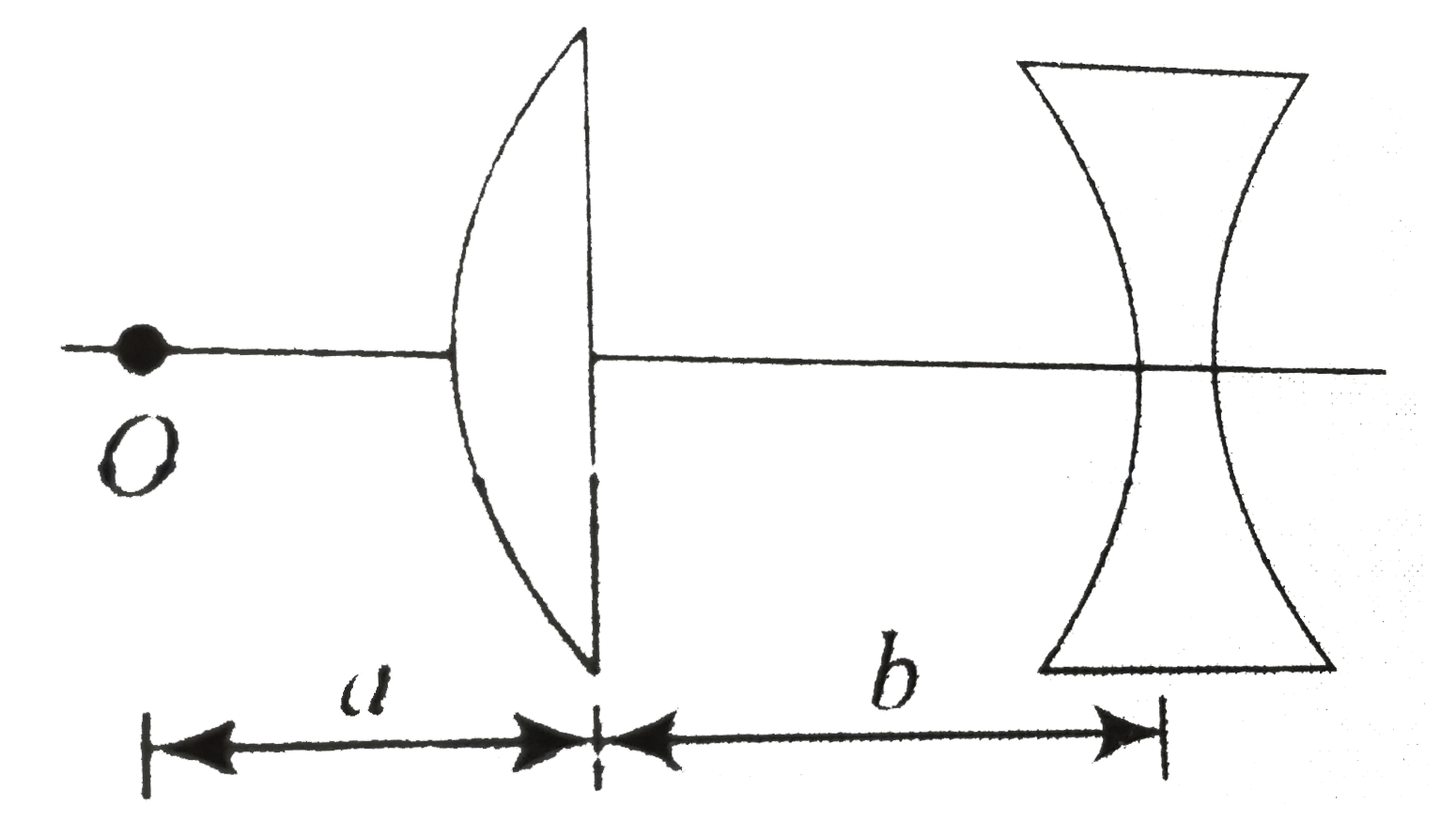
View SolutionIf the optic axis of convex and concave lenses are separated by a distance 5mm as shown in the figure. Find the coordinate of the final image formed by the combination if parallel beam of light is incident on lens. Origin is at the optical centre of convex lens

View SolutionA biconvex lens (μ=1.5) has radius of curvature 20cm (both).
find its focal length.
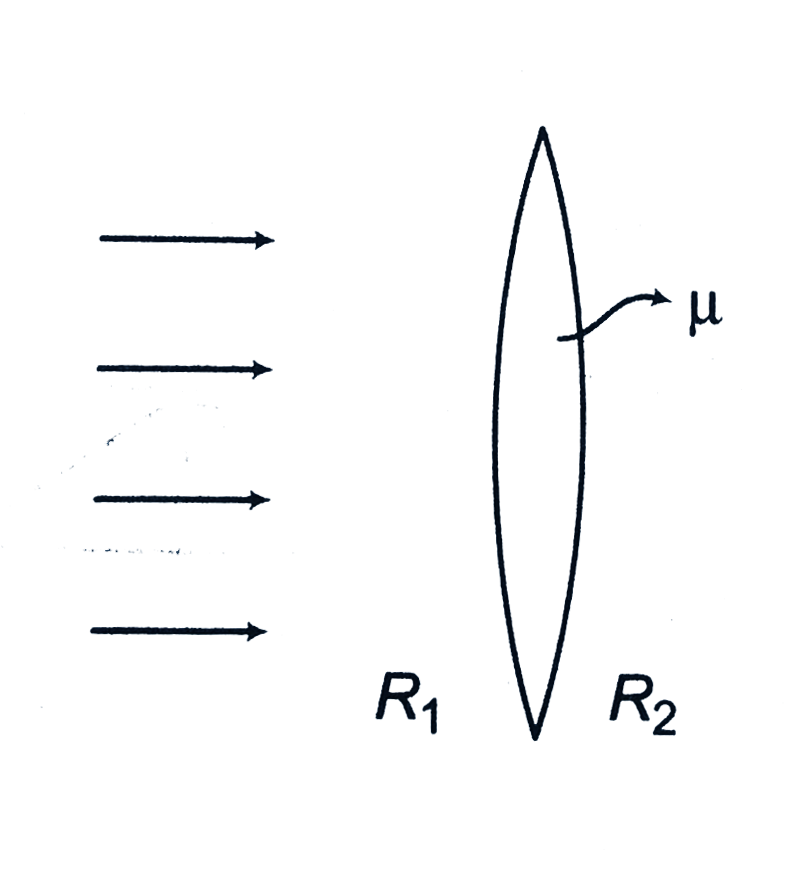
View SolutionAn object of height 1mm is placed inside a sphere of refractive index μ=2 and radius of curvature 20 cm as shown in the figure. Find the position, size, and nature of image, for the situation shown in Figure. Draw ray diagram.
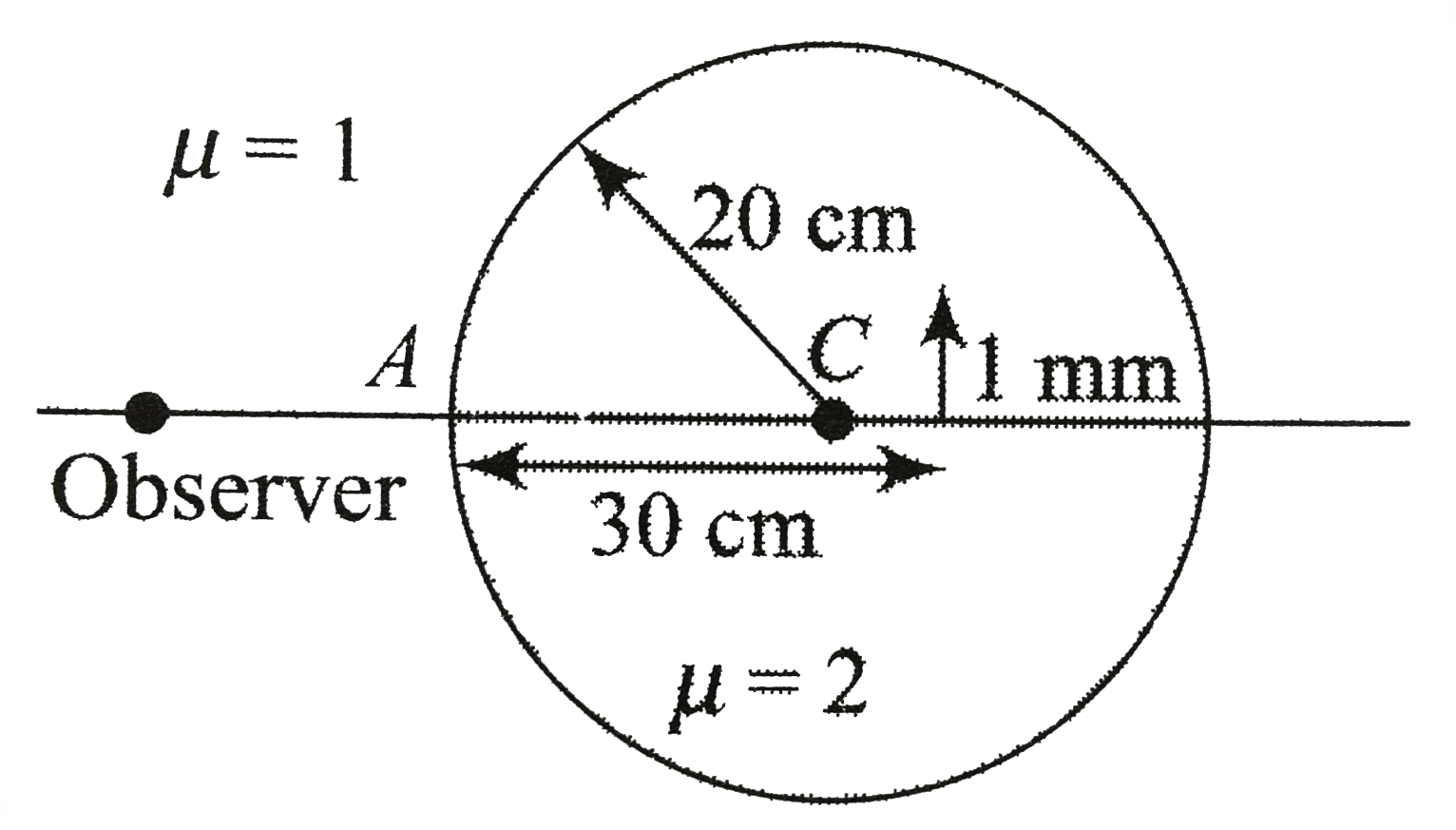
View SolutionTwo identical glass rods S1 and S2 (refractive index=1.5) have one convex end of radius of curvature 10 cm. They are placed with the curved surfaces at a distance d as shown in the figure, with their axes (shown by the dashed line) aligned. When a point source of light P is placed inside rod S1 on its axis at a distance of 50 cm from the curved face, the light rays emenating from it are found to be parallel to the axis inside S2. The distance d is
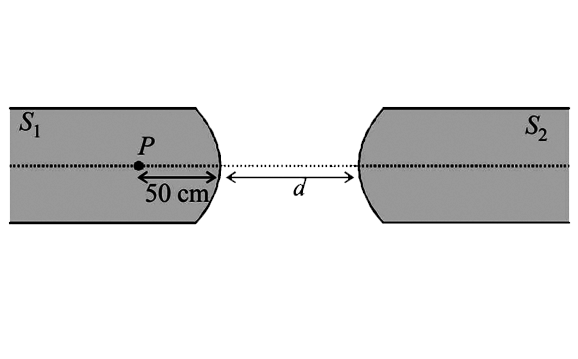
View SolutionA cylindrical tube filled with water (μw=43) is closed at its both ends by two thin, silvered plano - convex lenses, as shown in the figure. Refractive index of lenses L1andL2 and 2.0 and 1.5, while their radii of curvatures are 5 cm and 9 cm, respectively. A point O on the axis of the cylindrical tube. If it is found that all the images formed by multiple refractions and reflections coincide with the object, then the distance between both the lenses is
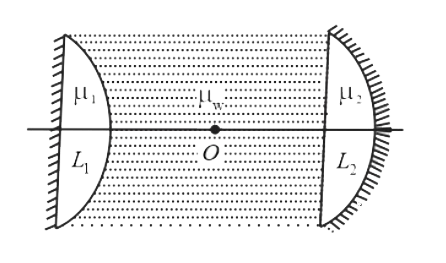
View Solution